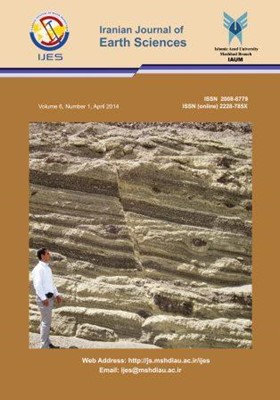Microbiostratigraphy of the Qom Formation in south and west of Tafresh, Central Iran
محورهای موضوعی : MineralogyI. Maghfouri Moghadam 1 , S. Borji 2 , E. Amini 3 , S. Azadbakht 4 , M. Taherpour Khalil Abad 5
1 - Department of Geology, Faculty of Science, Lorestan University, Khorram-Abad, Iran
2 - Department of Geology, Ashtian Branch, Islamic Azad University, Ashtian, Iran
3 - Department of Geology, Ashtian Branch, Islamic Azad University, Ashtian, Iran
4 - Payame Noor University, Khorram-Abad, Iran
5 - Young Researchers Club and elites, Mashhad Branch, Islamic Azad University, Mashhad, Iran
کلید واژه: Iran, Tafresh, Qom Formation, Foraminifera, Oligocene, Miocene,
چکیده مقاله :
The Qom Formation, a series of shales, sandstones and carbonate deposits, is the last transgression of the sea in Central Iran sedimentary basin. Foraminifera are one of the most important and numerous fossil groups present in the Qom Formation. In this study, the micropaleontology of the Qom Formation in three measured stratigraphic sections in south and west of Tafresh (Rakin, Band-e-Ali Naghi Beig and Hezar Abad) are discussed. Except of the Rakin stratigraphic section, the lower and upper boundaries of the Qom Formation with Lower and Upper Red formations are conformable from the stratigraphy point of view. But, there is no outcrop in the upper boundary of the Rakin stratigraphic section. The study of 78 samples which were taken from the studied sections led to the identification of 34 genera and 39 species of benthonic foraminifera, 2 genera and 2 species of planktonic foraminifera, 4 genera of red algae and 3 genera of bryozoan. Based on the recognized foraminifera such as Lepidocyclina (Nephrolepidina), Miogypsioides sp., Meandropsina anahensis, Ammonia beccarii the age of the Qom Formation in the Rakin stratigraphic section is determined as Chatian-Aquitanian and in the Band-e-Ali Naghi Beig stratigraphic section as well as the Hezar Abad stratigraphic section is determined as Aquitanian.
The Qom Formation, a series of shales, sandstones and carbonate deposits, is the last transgression of the sea in Central Iran sedimentary basin. Foraminifera are one of the most important and numerous fossil groups present in the Qom Formation. In this study, the micropaleontology of the Qom Formation in three measured stratigraphic sections in south and west of Tafresh (Rakin, Band-e-Ali Naghi Beig and Hezar Abad) are discussed. Except of the Rakin stratigraphic section, the lower and upper boundaries of the Qom Formation with Lower and Upper Red formations are conformable from the stratigraphy point of view. But, there is no outcrop in the upper boundary of the Rakin stratigraphic section. The study of 78 samples which were taken from the studied sections led to the identification of 34 genera and 39 species of benthonic foraminifera, 2 genera and 2 species of planktonic foraminifera, 4 genera of red algae and 3 genera of bryozoan. Based on the recognized foraminifera such as Lepidocyclina (Nephrolepidina), Miogypsioides sp., Meandropsina anahensis, Ammonia beccarii the age of the Qom Formation in the Rakin stratigraphic section is determined as Chatian-Aquitanian and in the Band-e-Ali Naghi Beig stratigraphic section as well as the Hezar Abad stratigraphic section is determined as Aquitanian.


